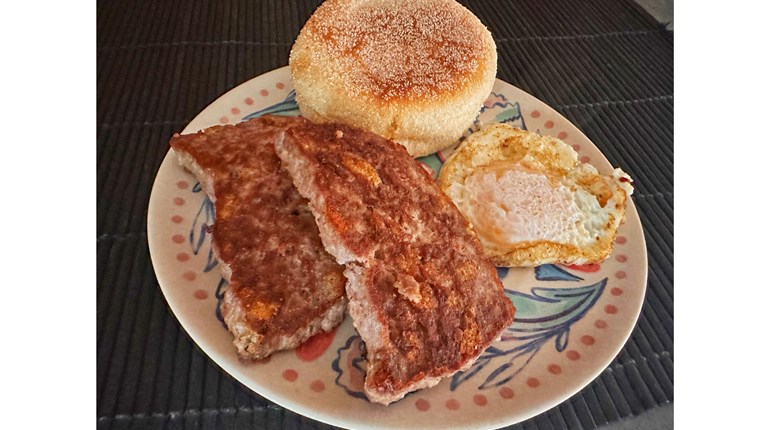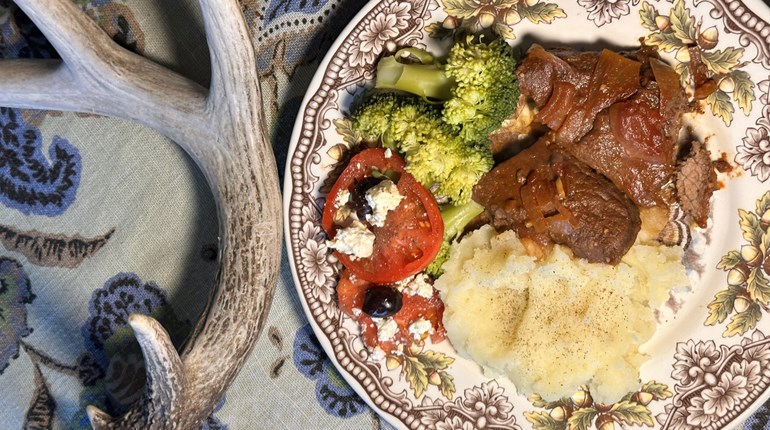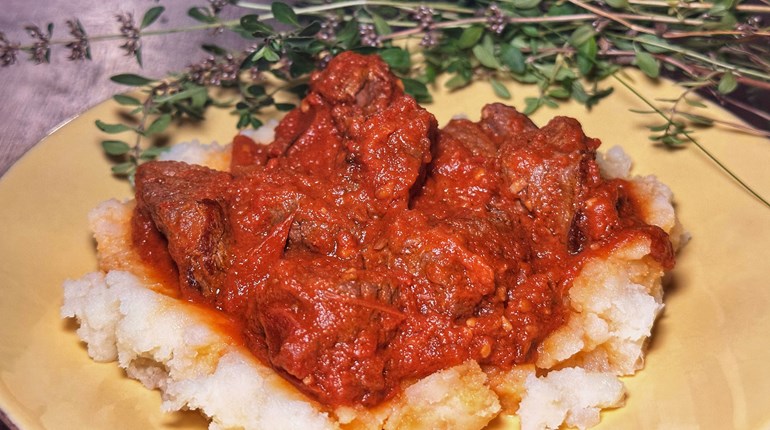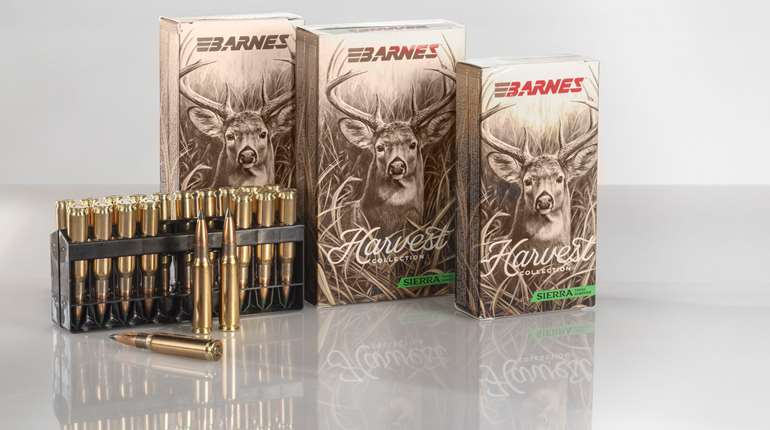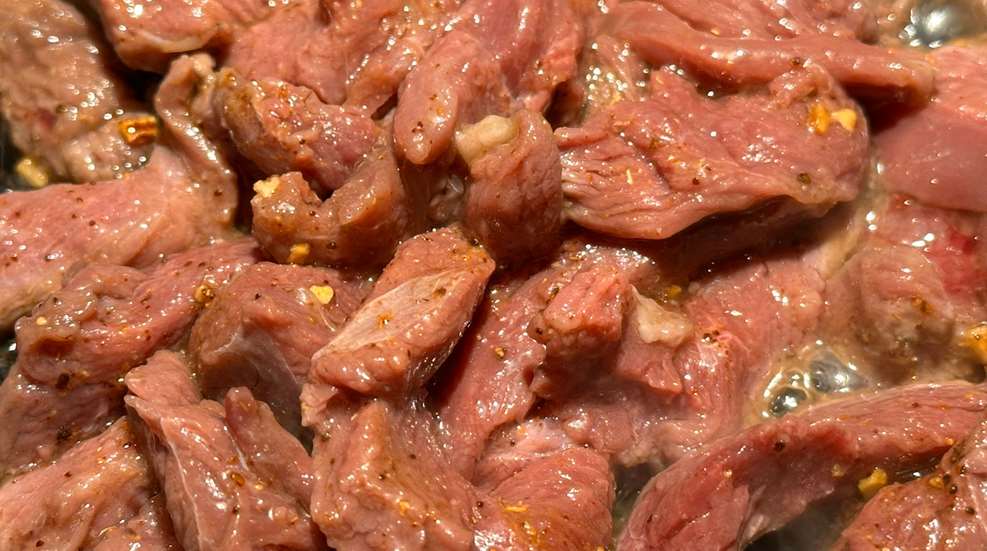
Many types of wild game get a bad rap for being tough and challenging to enjoy. Knowing how to cook extra lean proteins and maintain moisture is critical to having the most palatable dishes made from the critters we harvest. However, there are some tips and tricks to make dense, lean meat tender and delicious. Here are some ideas to try.
Acid
In a waterfowl hunting camp, the cook took some large Canada goose breasts and declared she planned to make fajitas for lunch. We looked at her with a jaundiced eye as she carefully sliced the visually tough meat into thin segments. Knowing that we were watching, she placed the meat into a shallow bowl and added white vinegar to cover the slices and stirred.
After a 20-minute soak, the goose was placed in a colander and rinsed well with cold water. It was allowed to drip dry before patting the pieces down with a paper towel. The slices were then quickly seared in a frying pan with hot oil, and the appropriate spices were added to make the fajitas.

To everyone’s amazement, the goose was tender and delicious. There was no biting, pulling, or tearing to get through a piece, and most people had seconds. Canada geese are fun to hunt, and knowing how to enjoy them on the table helps to appreciate the bird even more.
Acid wash, with vinegar, has been used on different kinds of meat and works wonders to help tenderize. When rinsed properly, it does not add extra flavor. Using an acid to tenderize meats can be as simple as using pickle juice, which we see in several recipes, to act like a brine with an acidic base. Get creative and try an acid treatment on a piece of wild game you anticipate to be tough and see the results.

Jaccard Knife
Have you ever heard of a Jaccard knife? It is a handheld meat tenderizer that uses rows of multiple razor-sharp blades to puncture and tenderize meat. This process helps to make tough cuts of meat more tender, improve the absorption of marinades, and create more evenly cooked meat. It is ideal for long-grained meat or cuts that tend to be denser.

Several butcher shops and grocery stores use commercial versions to make their steaks more tender than the competition's. Once you’ve tried one, nothing else compares or is good enough.
Meat tenderizers, like Jaccard knives, come in different models with different blade counts. The higher the blade count, the more cuts through a piece of meat, and the more tender it can be. There are 16, 48, and 64-blade models to consider. Some connoisseurs like fewer cuts, as they help maintain moisture. Some prefer to maximize the cuts to make every bite tender and allow for better absorption of marinades.

Jaccard knives work on all meat, including fowl, like turkey breast, and red meats, from steaks to roasts. Give them a try, and you could be surprised how well they work. They are easy to find online, with plenty of options.
Velveting
Velveting is a Chinese cooking technique used to make meat tender and juicy, especially tougher cuts like venison, black bear, goose, crane, or other wild or domestic meats. The process starts by marinating the meat in a mixture containing cornstarch or baking soda. The technique is the opposite of an acid wash, as it uses alkaline components to help break down the proteins in the muscle fibers. The treatment makes the meat softer and also helps it stay moist when cooked, especially in high-heat methods like grilling or stir-frying. The coating forms a light barrier around the meat, locking in juices and giving it a smooth, velvety texture.

This method is popular in Chinese cuisine because it makes meat taste more delicate and flavorful. It’s also a practical way to turn cheaper, tougher cuts into tender and delicious meat. Velveting works well on different types of meat, including beef, chicken, pork, and even seafood.

Basic Velveting Recipe for Wild Turkey Breast
Ingredients:
- 1 boneless, skinless turkey breast, thinly sliced
- 1 Tbsp soy sauce
- 1 Tbsp dry sherry
- 1 Tbsp cornstarch
- 1 egg white
- 1 tsp vegetable or sesame oil
Directions
- Slice the turkey into thin strips or bite-sized pieces.
- Mix the soy sauce, dry sherry, cornstarch, egg white, and oil until smooth in a large bowl.
- Add the turkey to the mixture and stir to coat all pieces evenly. Let it sit in the fridge for at least 20 minutes or up to an hour.

Pre-Cook—Optional but Traditional
Bring a pot of water to a gentle simmer (not a rolling boil). Add the marinated turkey and stir gently for 30–60 seconds, just until the surface turns white. This step locks in moisture. Remove and drain.
Final Cooking
Now stir-fry or cook the turkey as you normally would in your dish. It will stay juicy and tender.
I first experienced velveting in a Chinese restaurant where the cook prepared sandhill crane and specklebelly goose breasts. The velveting process and pre-cooking created incredibly tender meat in a stir fry, ginger crane chow mein with teriyaki goose. It was a game-changer from the day I first tried it.

If you are dealing with a tough piece of meat, try substituting cornstarch with baking soda. Baking soda increases the meat's pH, which helps to break down the tough connective tissue and muscle fibers, resulting in a more tender and juicy texture.
Marinades—Key Ingredients
Marinades are a great way to add flavor and help tenderize meat. The ingredients work like the acid wash, but without full-strength vinegar. The acid is often balsamic vinegar or lemon juice. Marinades with an acid can be used for a quick treatment or overnight.
Some meats marinate better than others. If you have ever eaten duck and had it taste pilly or like liver, it was likely over-marinated, and the proteins broke down further than anticipated. Duck takes 20 minutes to marinate, whereas a thick moose steak stands up to 24 hours in the same marinade.
A marinade I create works excellently on all wild game and is affectionately called The World’s Greatest Marinade. It might be a bold statement but try it and find out for yourself.

The World’s Greatest Marinade
Ingredients
- ¼ cup olive oil
- Tbsp Worcestershire sauce
- Tbsp soya sauce
- Juice from 1 lemon
- 1 clove garlic, minced
- 1 Tbsp seasoned pepper such as Montreal Steak Spice
Directions
Combine all ingredients in a Ziploc bag or plastic container and use on any waterfowl or venison.












